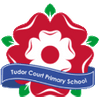Computing
At Tudor Court, computing is integral to our curriculum as we strive to equip our pupils with the knowledge and skills for today’s technology-rich world. At the heart of our Computing delivery, pupils are allowed to develop their communication, creativity and problem-solving skills transferable in the professional world. Our computing curriculum is designed to allow for both discrete and cross-curricular learning. We have invested in iPads, which pupils use to enhance their knowledge in lessons across the curriculum. The computing curriculum is divided into four distinct learning areas that children revisit and build upon each year. The four areas are:
• Multimedia
• Coding
• Online
• Data handling
Multimedia provides children with rich opportunities to develop their skills in photography, video, music, typing, and drawing using iPad, cameras and laptops. Collaboration and creativity are at the heart of multimedia lessons, and children can showcase their skills using Apple TV.
Children have the opportunity to develop their programming and debugging skills through the coding element of the curriculum using Scratch Junior, Scratch and Swift playgrounds. There are opportunities for children to programme Bee-Bots, Spheros and a Sprite using Scratch, Scratch Junior and Swift Playgrounds. In an ever-changing world, we are mindful of the future that our children will be part of, they will need to be agile in their approach to learning, so we strive to provide rich learning opportunities by including experiences using AR (augmented reality) and VR (virtual reality) when relevant and appropriate.
Online is divided into internet safety, research, online identity and technology in our lives. There is a strong focus on internet safety and preparing children for various scenarios they may face online. Using National Online Safety to support our curriculum, children have many opportunities to discuss how to deal with many situations and understand their responsibility when using the internet.
Data handling allows children to understand how to collect information to answer questions. Children develop their early data representation skills using 2simple 2graph and Just2easy before moving on to more sophisticated methods using Numbers, Excel and infographics. Children are encouraged to think creatively but consider the efficiency of such processes.
In each area of computing, children are exposed to and expected to learn essential vocabulary to support their knowledge and skills. Children are expected to use and understand key vocabulary when discussing their learning.
Pupils with special educational needs are supported through adapted planning and outcomes. The Computing curriculum is designed so that all pupils can access the learning at an appropriate level for them. Recording devices, programmable tools and iPads offer our pupils the chance to take an active role in their learning. Although the computing curriculum has been mapped to allow for discrete computing lessons, teachers are encouraged to actively seek purposeful opportunities for children to apply their skills across the curriculum, e.g. collecting information about plant growth in science and creating a chart to show the growth over time.





